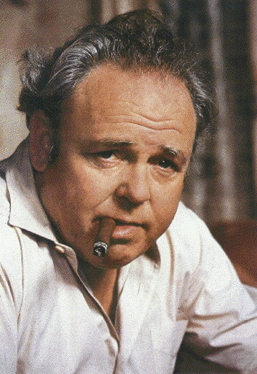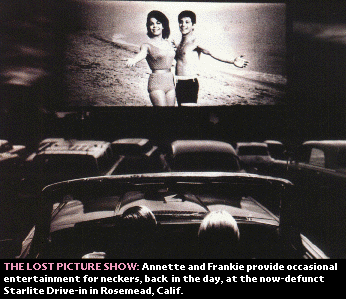- Home
- Introduction, Update Information, Links
- The Super Seventies "Classic 500"
- Readers' Favorite Seventies Albums
- Seventies Single Spotlight
- The Top 100 Seventies Singles
- Favorite Seventies Artists In The News
- Seventies Almanac - Year By Year
- Seventies Singles - Month By Month
- Seventies Albums - Month By Month
- Seventies Daily Music Chronicle
- Seventies Superstars In Their Own Words
- The Super Seventies Archives
- Seventies Trivia Quizzes & Games
- Seventies MIDI Jukebox
- The Super Seventies Bookstore
- The Super Seventies Photo Gallery
- Seventies' Greatest Album Covers
- Popular Seventies Movies & TV
- Seventies Celebrity Portrait Gallery
- Seventies Lyrics Hit Parade
- Top Seventies Artist Music Videos
- Seventies Usenet Music Forums
- Seventies Smiley Calendar
- EXTRA!
- Superseventies.com Facebook Page
- Superseventies.com Reddit Discussions
- The Super Seventies Blog
- Tweet The Seventies
- RockSite InfoBank
- Beatlefan Site
- Thanks For Your Support! / Top Sellers
- Search The Rock Site/ The Web
![]()
Carroll O'Connor's Archie Bunker was TV's
most complex antihero. Those were the days.
By Ken Tucker
in Entertainment Weekly

![]() arroll O'Connor died June 21 of a heart attack in Los Angeles at the age of 76. He didn't become a star -- that is to say, he didn't become All in the Family
's Archie Bunker, the guileless archconservative and one of the greatest characters in television history -- until he was well into his 40s. O'Connor had spent his early career in bit parts on TV shows like Bonanza
and The Rifleman,
and he caught the eye of Family
producer Norman Lear with his role in the 1966 film What Did You Do in the War, Daddy?
Mickey Rooney had reportedly turned down the role of Bunker, an embattled Queens, N.Y., dock foreman, and O'Connor probably figured he had nothing to lose. Middle-aged, perennially peeved-looking fellows weren't offered starring roles in sitcoms every day -- especially on CBS, then still the Tiffany Network.
arroll O'Connor died June 21 of a heart attack in Los Angeles at the age of 76. He didn't become a star -- that is to say, he didn't become All in the Family
's Archie Bunker, the guileless archconservative and one of the greatest characters in television history -- until he was well into his 40s. O'Connor had spent his early career in bit parts on TV shows like Bonanza
and The Rifleman,
and he caught the eye of Family
producer Norman Lear with his role in the 1966 film What Did You Do in the War, Daddy?
Mickey Rooney had reportedly turned down the role of Bunker, an embattled Queens, N.Y., dock foreman, and O'Connor probably figured he had nothing to lose. Middle-aged, perennially peeved-looking fellows weren't offered starring roles in sitcoms every day -- especially on CBS, then still the Tiffany Network.
Over the years, it's become standard to call Archie a lovable bigot, but that sells O'Connor's performance short. The actor boldly revealed the true ugliness of Archie's bigotry, his mixed jealousy and contempt for blacks, Jews and Hispanics, whom he referred to with epithets no one had uttered on a comedy before. O'Connor was able to suggest why a white working stiff of that generation may have held the fetid beliefs he did, shrewdly realizing that Lear had constructed the rest of the series as a critique of Archie. Everyone in Archie's world -- his son-in-law (Rob Reiner's Meathead), his dim but noble wife, Edith (Jean Stapleton), his neighbor George Jefferson (Sherman Hemsley) -- existed to point out Archie's flaws, to offer the other side of any tirade, whether it concerned the women's movement or black nationalism. On Family from 1971 to '79, O'Connor was amazingly nuanced: He could be mean, dumb, sly, vindictive, and embarrassed all in the space of a single scene, and deserved every one of the four Emmys he won. (From '79 to '83, he polished shot glasses with less conviction as a bar owner in Archie Bunker's Place. )
The post-Bunker era found O'Connor doing his most regular work as star and producer of a TV version of In the Heat of the Night (1988-94), which won him another Emmy and gave a supporting role to his adopted son, Hugh, who committed suicide in 1995 after struggling with drug addiction. It was O'Connor's public anguish over his loss -- he became a dedicated antidrug crusader -- that seemed to shape his final years.
The release of his last film -- 2000's comedy Return to Me, his first feature in 23 years -- coincided with the unveiling of his star on the Hollywood Walk of Fame. One broiling March day on Hollywood Boulevard, O'Connor, his wife, Nancy, his Return costars Minnie Driver and Bonnie Hunt, and a cluster of fans gathered for the brief ceremony. The actor's accomplishments were extolled, the star was introduced, and pictures were snapped. After O'Connor signed a few autographs with a slightly shaky hand, the crowd dispersed. Hunt walked over and gave him a hug and said, "Were you thinking of Hugh a little?" O'Connor looked at Hunt, startled, then hugged her. "Thank you for saying his name," he said. "People never want to talk about Hugh, because they think I'll become upset or depressed, but just the opposite is true. I love to think about him; I love it when people remember him. Yes, I was thinking of my son."
It wasn't the sort of sentiment you'd ever hear from Archie Bunker, which only made more clear just how pure an artistic achievement O'Connor's most famous performance had been.
![]()
The Great American Drive-In may be vanishing in real life,
but on the Internet it's playing to a full parking lot.
by Chris Willman
in Entertainment Weekly

![]() f it seems like aeons since you heard the tag line "Now playing at a theater or drive-in near you," that's because odds are there aren't any ozoners (as Variety
used to call 'em) within cruising distance of your crib. A car-crazed America once sported nearly 5,000 drive-ins; that tally has shrunk to fewer than 500. Blame it on moviegoers impatient with speaker boxes that don't come with Dolby-surround; Wal-Marts willing to pay premium prices for big chunks of real estate; and relaxed sexual mores that no longer require kids to make out by the light of a Roger Corman cheapie.
f it seems like aeons since you heard the tag line "Now playing at a theater or drive-in near you," that's because odds are there aren't any ozoners (as Variety
used to call 'em) within cruising distance of your crib. A car-crazed America once sported nearly 5,000 drive-ins; that tally has shrunk to fewer than 500. Blame it on moviegoers impatient with speaker boxes that don't come with Dolby-surround; Wal-Marts willing to pay premium prices for big chunks of real estate; and relaxed sexual mores that no longer require kids to make out by the light of a Roger Corman cheapie.
But the scarcer drive-ins become, the more obsessive their partisans get. Some alfresco fanatics categorically refuse to enter a multiplex, preferring to travel dozens, or hundreds, of miles to see The Blair Witch Project surrounded by actual woods or a Star Wars sequel under, well, you know. You can find a few hundred such folks by joining a Yahoo! D-I discussion group , where topics range from the restoration of vintage dancing-hot-dog intermission films to which concession stands still carry the mosquito-repelling smoke bomb in a tube known as Pic.
At least 60 U.S. drive-ins have their own websites, and regional devotees maintain plenty of pages dedicated to the ozoners in their states. But in honor of summer-road-trip season, now in full swing, here are some national sites outdoor cineasts should find worth the digital drive.
DRIVE-INS.COM
Pretty much a one-stop-shopping spot, Jen Sherer's site features the most thorough and consistently updated database of both open and closed drive-ins, complete with photos, descriptions, and links to driving directions. Plus (of course) weather reports. You can search by zip code to find the roofless theater nearest you or sign up to have movie listings and times e-mailed to your in-box (in case the traditional "show at dusk" doesn't suffice). Photo essays and road-trip reveries help make this mecca the next best thing to sneaking into a theater in a trunk. A
DRIVEINTHEATER.COM
Tim Thompson's site, which has been around since the early '90s, is the granddaddy of comprehensive outdoor-cinema guides. Unfortunately, the state-by-state listings are only occasionally updated. (Nothing like heading out to the movies only to find a new Best Buy store there.) But its starry graphics will put you in just the right nostalgic/celestial mood, and the comprehensive links page instantly immerses you in dozens of local D-I icons. B
DRIVEINWORKSHOP.COM
In case you've inherited a fortune and want to turn a Home Depot back into an ozoner, or just have an unnatural interest in gravel-ramp construction and outdoor projection, here's everything you need to know about the technical specs of low-tech drive-ins. Laymen will find sufficient trivia too, like the fact that in 1955 there were 171 American drive-ins sharing the name Starlite, far ahead of the 107 Sunsets and the 79 Sky-Vues. B+
PHOTO TOURS
Got a hankering to see some of the cool marquees of yesteryear, back when drive-ins worked extra hard to lure the CinemaScope-starved interstate traveler? Or some of the massive, mural-covered screen towers that used to play proscenium to 90-foot Marilyns and Deans? Roadside Peek
provides a good region-by-region look at this waning American architecture. And Don and Susan Sanders, who've published two ozoner books, use their Take a Drive-In Tour!
site to show off at least a few vintage and current shots from every state in the Union. You don't even have to wait for sundown to enjoy these shows. B
![]() Reader's Comments
Reader's Comments
No comments so far, be the first to comment .
![]() Best of EXTRA!
| EXTRA!
| Main Page
| Seventies Single Spotlight
| Search The RockSite/The Web
Best of EXTRA!
| EXTRA!
| Main Page
| Seventies Single Spotlight
| Search The RockSite/The Web


